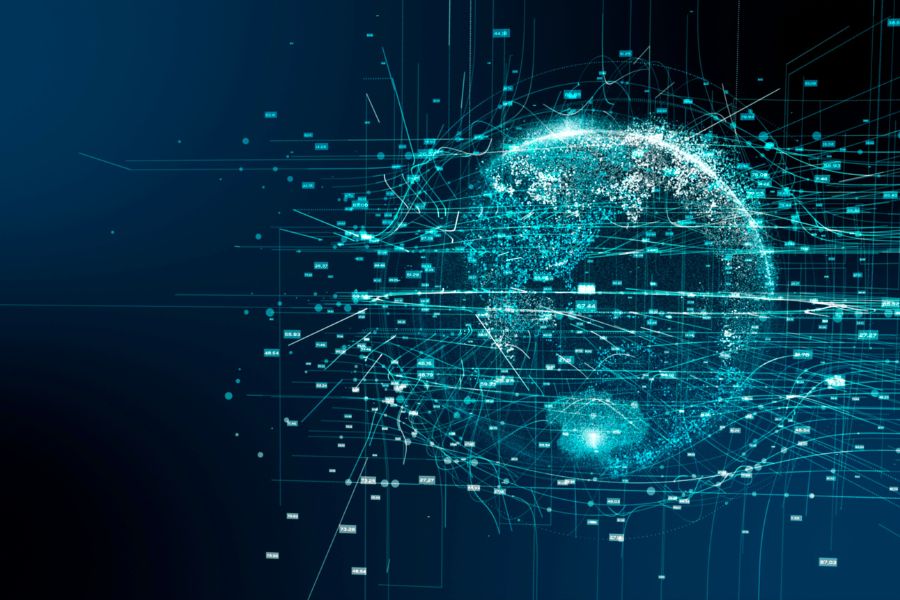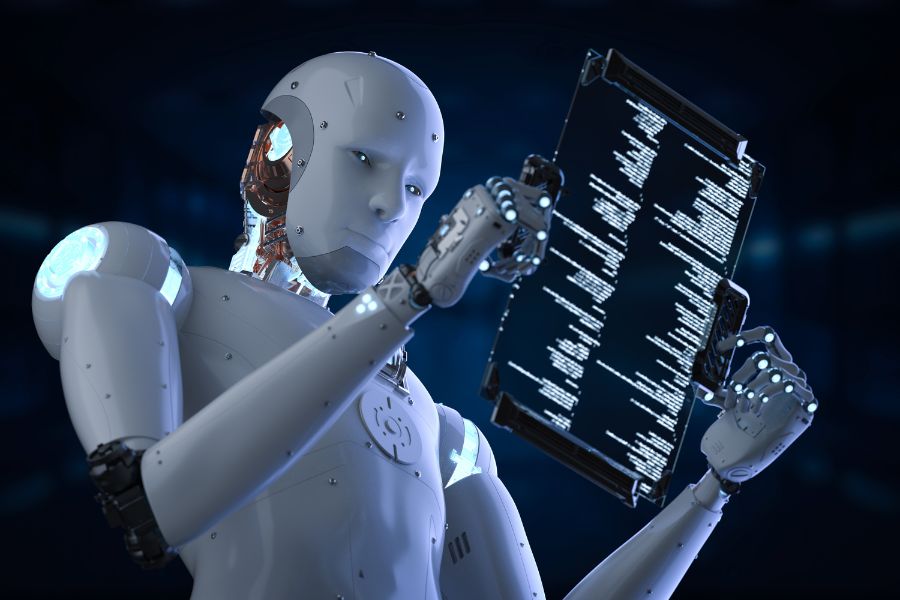How Will Artificial Intelligence Impact Cyber Security in 2024 & Beyond?
February 13, 2023, 4 min read
With the massive increase in the Internet of Things (IoT), cyberspace has become a cyber ecosystem or environment that includes numerous devices. Because of the development of IoT, the improvement of cyber security systems is inevitable. This remarkable improvement in technology extends beyond devices and information security alone. Cyber attacks become more and more dangerous and advanced as well. Thus, the development AI offers is a must for the future of cyber security. If you want to find out the improvements AI proposes for the cyber security ecosystem’s future in 2022, you can read this article.
Definition of Cyber Security Ecosystem
The cyber security ecosystem or environment consists of various subgroups: network and security devices, cloud and SDN devices, vulnerability scanners, orchestration systems, ITSM systems, SIEM or SOAR solutions, Chatops, authentication and authorization, and business applications. These subfields can be linked through managing, integrating, and supporting. In addition, a cyber security ecosystem includes both macro and micro levels. Numerous participants in the cyber security ecosystem, such as governments, private firms, non-profit organizations, and cyber devices, enrich the environment.
Thanks to the various participants in the cyber security ecosystem, this environment is developing and expanding daily. Since artificial intelligence has an essential spot in the development of information security technologies, it is also essential for the ecosystem as a whole. The cyber security ecosystem is filled with various devices and tools. According to IBM’s report, an average company’s cyber security environment includes 25 security products and services from 13 vendors. However, larger companies with multiple departments often require over 100 unique security tools.
As the environment gets crowded, the need for atomized systems emerges. And AI is a perfect option for that because it also covers tasks that require human intelligence, for instance, decision-making, speech recognition, and visual perception. In addition to these qualities, adaptation is an essential feature of AI in this complex cybersecurity environment. Therefore, the cyber security ecosystem gets crowded as AI offers new protection tools.
Cognitive Model of AI
AI’s cognitive model has an essential place in the future of the cyber security ecosystem in 2022 because of features like natural language processing, computer vision, pattern recognition, and reasoning and optimization. Besides, the need for human interaction decreases over time thanks to machine learning and intelligence. The more the cognitive model of AI improves, the more AI systems will take over cyber security systems. While the cognitive model has reduced the missed threats by 25%, this percentage increases as AI holds more place in cyber security. This success is a result of machine learning (ML), deep learning (DL), and symbolic deep learning (SDL).
The Development of Machine Learning
Through machine learning technology, many algorithms have started to take place in the cyber security ecosystem. The algorithms used include Dimensionality Reduction, Random forests, Decision trees, Gradient Boosting, Logistic Regression, Linear Regression, K-means, Naive Bayes, SVM, and KNN. Machine learning-powered cybersecurity tools include X Sophos Intercept Tool, TAA tool (Symantec’s Targeted Attack analytics), IBM QRadar Advisor, and Darktrace Antigena. Thanks to these numerous algorithms and tools, the cybersecurity ecosystem will get more crowded in 2022.
Conclusion
In the modern world, data protection and information security have become tasks requiring many tools. Thus, the cyber security ecosystem gets more and more crowded each year. With the integration of artificial intelligence (AI) technology into cyber security, new algorithms and tools have emerged. Thus, we should examine AI-based security technologies to understand the ecosystem’s future in 2022.
The development of SIEM (Security Information and Event Management) has led to a more explicit recognition of the need for AI-based tools. Because SIEM is a set of tools and services, it successfully provides a more integrated cyber security ecosystem while decreasing the network’s vulnerability. Since companies enter complex and lengthy series of data every day, the involvement of AI-based tools becomes necessary in the cyber security ecosystem.
FAQ
● What are machine learning tools involved in the cyber security environment?
While numerous machine learning tools are being used successfully for information security, some of the tools are bioHAIFCS, Targeted attack analytics (TAA) by Symantec, Cyber Security Tool Kit (CyberSecTK), DefPloreX, StringSifter, Sophos’ Intercept X tool, Cognito by Vectra, and IBM QRadar Advisor.
● What are the advantages of AI-based tools in the cyber security ecosystem?
AI-based tools are the only way to meet the heightened security needs of the modern world. While these tools decrease the vulnerability of networks, they also run faster and more accurately. Also, they reduce the time and energy spent on data protection through their automated systems. Insider and external threats can be avoided to prevent data breaches.
● What are the SIEM tools?
As mentioned before, the cyber security ecosystem has become more crowded and improved with SIEM tools. Some tools successfully used include Splunk Enterprise Security, AT&T Cybersecurity AlienVault Unified Security Management, McAfee Enterprise Security Manager, IBM QRadar, LogRhythm NextGen SIEM Platform, and RSA NetWitness.
● What is the future of the cyber security ecosystem in 2022?
The use of AI-based tools has doubled in the past four years. Thus, we expect it to increase even more in 2022. Also, the number of Internet of Things (IoT) increases each year. These facts indicate that the cyber security ecosystem will be more crowded and improved in 2022.
*The main image by Tara Winstead from Pexels.






























